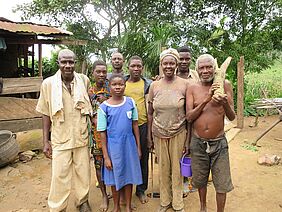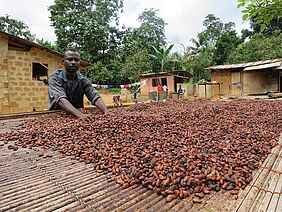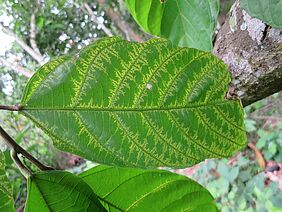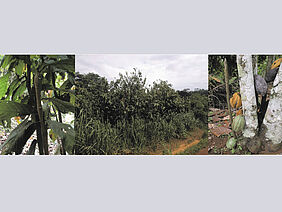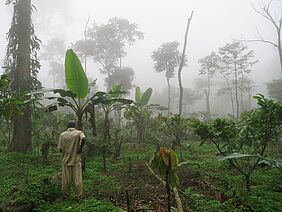(Frick, 22 March 2018) Having spread widely in West Africa during the past few decades, the Cocoa Swollen Shoot Virus Disease (CSSVD) is now a serious threat to global cocoa production. So far, the only effective treatment is the removal of infected cocoa trees (Theobroma cacao L.), followed by a replanting of the fields with CSSVD-tolerant trees, a method comparable with treatments of fire blight in Switzerland.
The disease is particularly relevant for the Ivory Coast and Ghana, the two largest cocoa producer countries. Current estimates assume that in Ghana, about 17 percent of all cocoa areas are affected and over 300 million cocoa trees have fallen victim to the disease in the past 70 years. This equals a loss of several billion US dollars, and for many farmers this means the loss of their regular source of income.
Agroforestry offers solutions
Past research has mainly focused on resistance breeding and the control of the insect vectors of the virus. However, no major successes could be achieved so far. Diversification measures such as agroforestry received little attention in the past. They have, however, great potential to mitigate the severity of the disease. This is the conclusion of a research project of FiBL, the Swiss Federal Institute of Technology (ETH) Zurich and local partners. The scientists tested on small farms in Ghana how shaded cocoa – that is, cocoa grown beneath the canopy of shade trees in agroforestry systems – affects both the severity of CSSVD and the cocoa yield.
In agroforestry systems with 50 percent shade, CSSVD severity was lowest and cocoa yield highest. This indicates that agroforestry offers an optimal coping strategy to achieve a balance between CSSVD severity and reduced cocoa yields.
To explain the underlying factors that led to the positive effects of shade trees, the researchers also investigated the light conditions and the fertility of the soil. The results suggest that the positive effects of shade trees were mainly that the shaded cocoa trees were exposed to less light stress than the trees in monoculture.
The results were published in the scientific journal "Agriculture, Ecosystems & Environment".
Further information
Contact
- Christian Andres, Department of International Cooperation, FiBL Switzerland
- Franziska Hämmerli, Communication, FiBL Switzerland
Supporters
- Sawiris Foundation for Social Development
Partners
- Swiss Federal Institute of Technology (ETH) Zurich, Switzerland
- Cocoa Research Institute of Ghana (CRIG), Ghana
- University of Ghana, Ghana
Links
- fibl.org: Presentation of the research project
- blogs.ethz.ch: Contribution of FiBL researcher Christian Andres in the blog of the ETH Zurich
Videos
- youtube.com: Healthier cacao in West Africa
The documentation summarizes the main findings of the research project. The cultivation method "dynamic agroforestry" is explained using the example of "Sronko (Unique) Farms" in eastern Ghana. - youtube.com: Healthier cacao in West Africa (short version)
Bibliographie
Andres, C., Blaser, W.J., Dzahini-Obiatey, H.K., Ameyaw, G.A., Domfeh, O.K., Awiagah, M.A., Gattinger, A., Schneider, M., Offei, S.K., Six, J. (2018): Agroforestry systems can mitigate the severity of cocoa swollen shoot virus disease. Agriculture, Ecosystems and Environment 252:83-92. doi: https://doi.org/10.1016/j.agee.2017.09.031
Download
Media release (305.9 KB)
Media release (42.0 KB)





